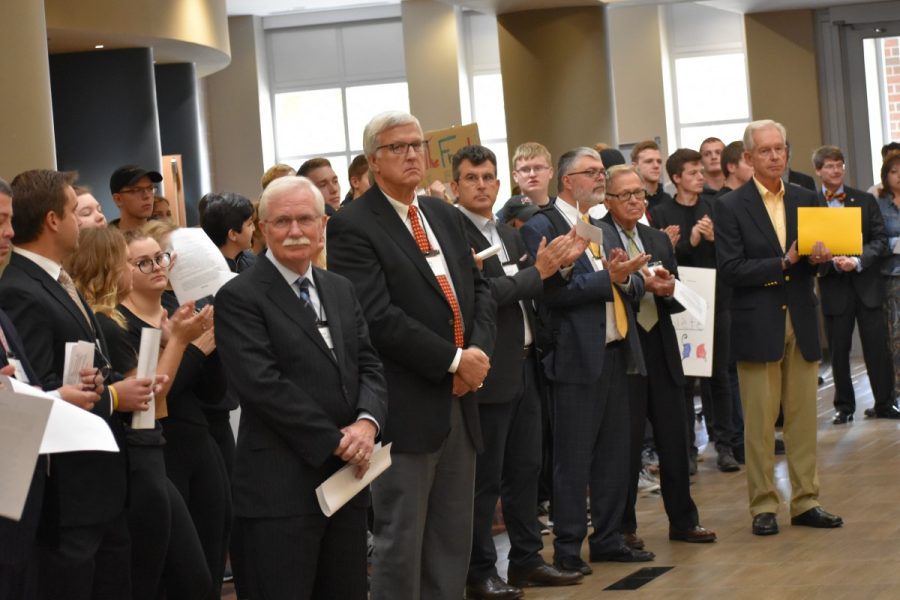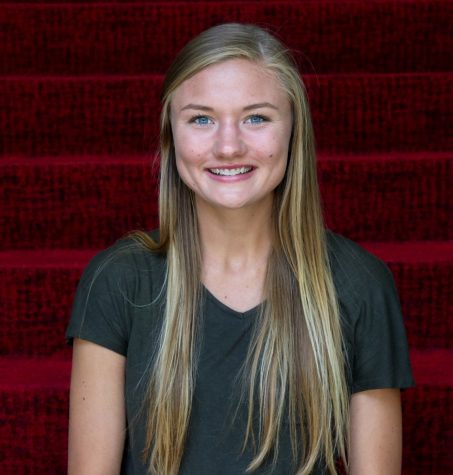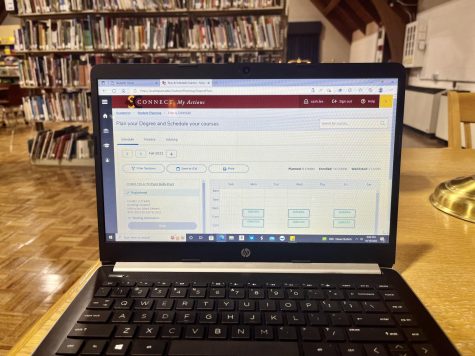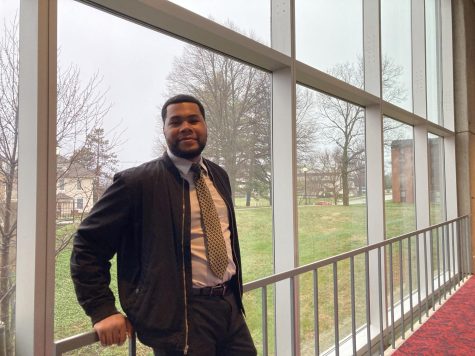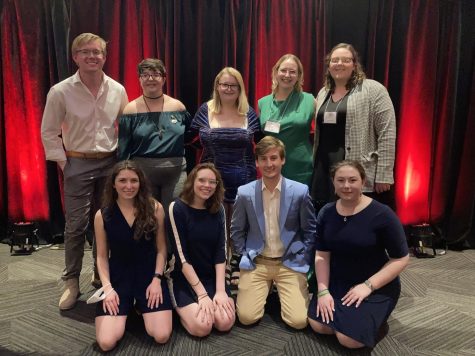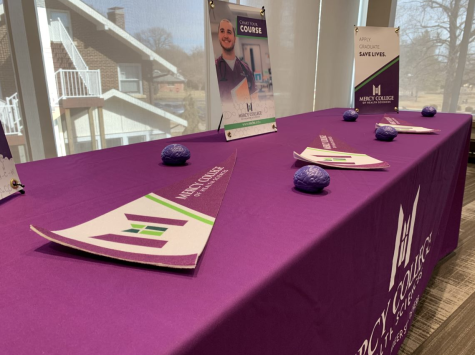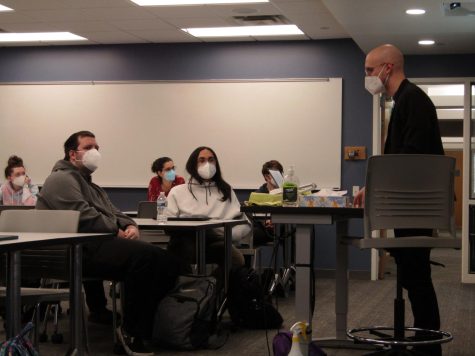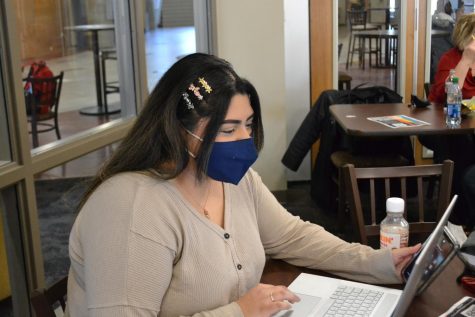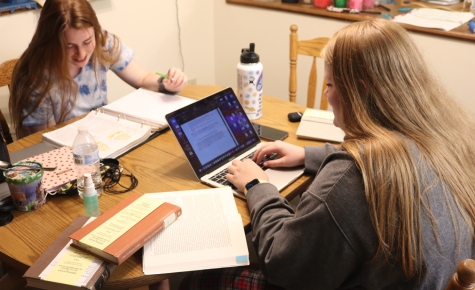Recent faculty cuts leave Simpson community on edge
October 27, 2018
Simpson College reduced 25 faculty positions over the past two semesters, leaving many concerned about the college’s academic vitality.
The series of reductions began last year in May, when the college began the process of a program prioritization. This process was a review of all academic and nonacademic programs to determine which positions and departments to cut.
The board of trustees approved the process in May 2017, according to President Jay Simmons. The administration spent the following year gathering data, communicating with departments about how their area relates to the college’s mission and deliberating.
“One of the things we want to make sure that we’re responsible about is using the college’s resources and students’ tuition dollars and making sure we’re spending those in ways that are in the best service to the students,” Simmons said.
A rubric was the backbone in leading to the closure of a department, two majors and 25 faculty positions. It examined the impact, relevance, effectiveness and sustainability of the programs. This was an objective way to evaluate the programs, Simmons said.
Each department, academic and non-academic, completed a rubric accompanied by a narrative explaining their self-rating. It was sent to the steering committee, comprised of appointed and elected faculty, staff and two student representatives.
They discussed and evaluated the documentation. If documentation was adequate, they carried on. If they needed more information to understand the department’s challenges, it was sent back to the department.
Once the review was complete, the committee ranked departments from most to least efficient, based on data such as number of credits generated by academic programs, enrollment data and costs, Academic Dean Kent Eaton said.
“The intent of this rubric ranking was never to lop off the, let’s say, bottom three or four programs because they were less efficient. Because that would have meant that we would not have any art programs because those are the most expensive for us to run,” Eaton said.
The committee’s recommendations were shared with the submitting unit and the president. Once facts were identified as correct, the president sent his recommendations to the board of trustees.
“I want to be very clear—no one in that steering committee had any responsibility for any personnel decisions except for members of the cabinet and me,” Simmons said.
The 25 faculty reductions came in many forms. Some came from retirements, while others acquired new positions. Others were cut entirely. The fallout will be seen in the next six to 24 months, as the faculty’s departures are variable, Simmons said.
This semester’s cuts, which do not seem to be part of last year’s prioritization process, included the closing of the art department, the elimination of French and German majors, the restructuring of the clinical health sciences program and cuts to several faculty positions.
Students with discontinued majors will be allowed to complete it through a teach-out program. This is required by the Higher Learning Commission and the Department of Education, Simmons said.
In an email Simmons sent out to campus on Oct. 10, he said, “These decisions follow a comprehensive, yearlong program prioritization process focused on strengthening Simpson College’s financial and enrollment profile.”
In the email, Simmons attributed the eliminations of the art department and French and German majors to a decline in student interest in those areas.
Members of the college’s staff have experienced cuts of their own, too.
Simmons said the staff have experienced cuts for several years. When he started at Simpson five years ago, there were about 176 full-time staff members. Now there are about 134.
“It’s not the kind of news anybody wants to give because when we’re giving this kind of news, it’s unpleasant for everybody,” Simmons said. “And we have wonderful, valued members of our community who have given great service to the college and to our students, but because of the changing needs of the college, we need to make these changes.”
According to the terms of the faculty handbook, department chairs can make an appeal to the Educational Policies and Curriculum Committee that they don’t approve the changes that affect their department.
If EPCC agrees with the administration, the appeal is denied. But if they disagree, it’s sent to the Learning Programs Committee of the board of trustees, which bears the ultimate decision.
The reductions have raised many questions and concerns among the Simpson community, including a lack of transparency.
When asked if the administration has been transparent, Simmons said it has been as transparent as it could be.
“We’ve tried to make the whole process as participatory as we can,” he said.
Eaton countered Simmons.
“To say that when it comes to transparency that we’ve earned a grade of ‘A plus’, of course not,” Eaton said. “I hope that when people look at the limitations that we’ve faced that they’ll at least give us a passing grade.”
Both administrators cited privacy laws as limitations that dictate what they can share regarding faculty cuts.
“I wish that that were different, I really do,” Eaton said about the limitations.
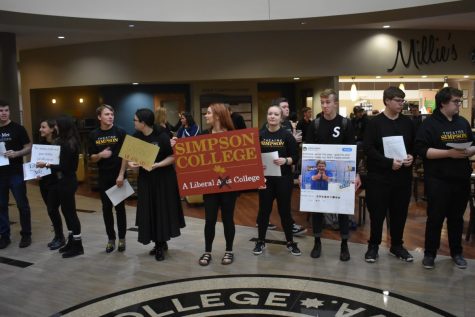
To voice their frustrations about transparency and other concerns, students hosted a demonstration on Oct. 19 in Kent Atrium. Board members, faculty, staff and students gathered as students from affected departments gave speeches.
The demonstration ended with a list of student demands. It included items such as increased student representation in the prioritization process, access to detailed minutes from faculty and board meetings and considering cuts or budget adjustments to areas other than faculty.
Eaton said he understood why students may be frustrated with student representation.
“The thought was that by including student representatives from SGA (Student Government Association) that that would provide an adequate student voice,” he said. “I think from a student perspective now, that if what I hear is true, that most students would feel like they were not a part of the discussion to the extent that they would have liked.”
Although he said the demands are worthy of discussion, Eaton said everything won’t be responded to affirmatively, right away.
On Oct. 3 and 10, students attempted to be involved by attending faculty meetings. But in both instances, the faculty motioned to close the session so only faculty remained.
In the Oct. 10 meeting, students were allowed for about an hour but were then asked to leave because President Simmons would not share certain information with faculty if students were present. Eaton said the rest of the session only lasted about 10 minutes and was anticlimactic but necessary for faculty to have free voice.
However, based on previous reporting from The Simpsonian, the decision to close the session was in order for Simmons to share information with faculty he otherwise would not share with students present in the room.
Another topic circulating throughout campus has been financial retrenchment, which Simmons said is defined in the faculty handbook as “a couple years or more of unbalanced budgets.”
According to previous reporting from The Simpsonian, Eaton said the faculty voted 58-42 to not recommend a declaration of retrenchment to the president, who bears the decision.
Declaring this state of inadequacy would raise questions about the long-term financial health of the college, but Simmons said the college’s long-term health is steady.
He said Simpson is in the top third nationally in terms of overall endowed resources and that the college is struggling with near-term budget problems.
When asked about the public’s response to program prioritization, Simmons said, “I would say it’s been about 50-50, to be honest.”
Eaton emphasized that he’s received some positive messages.
When asked why students should stay at Simpson among these difficulties, Simmons said the outcomes are among the best in small private colleges, and there’s an opportunity to work with talented people.
Eaton echoed him by saying Simpson has the best faculty and staff he has ever worked with, and an exceptional student body.
The All-Campus Budget Committee will review the prioritization process to see what changes need to be made should the college participate in it again, Eaton said.
According to Simmons in an email to the student body, there are no more planned reductions, however, the rubric which ranks the departments will continue to be refined in the future.
“And then from time to time we’ll go back to it just to be sure,” Simmons said.
Two question and answer sessions held by Simmons will be available for students to attend at 3 p.m., Tuesday and 8:30 a.m Thursday. Both sessions will be in the Jordan Lecture Hall in the Carver Science Building.



